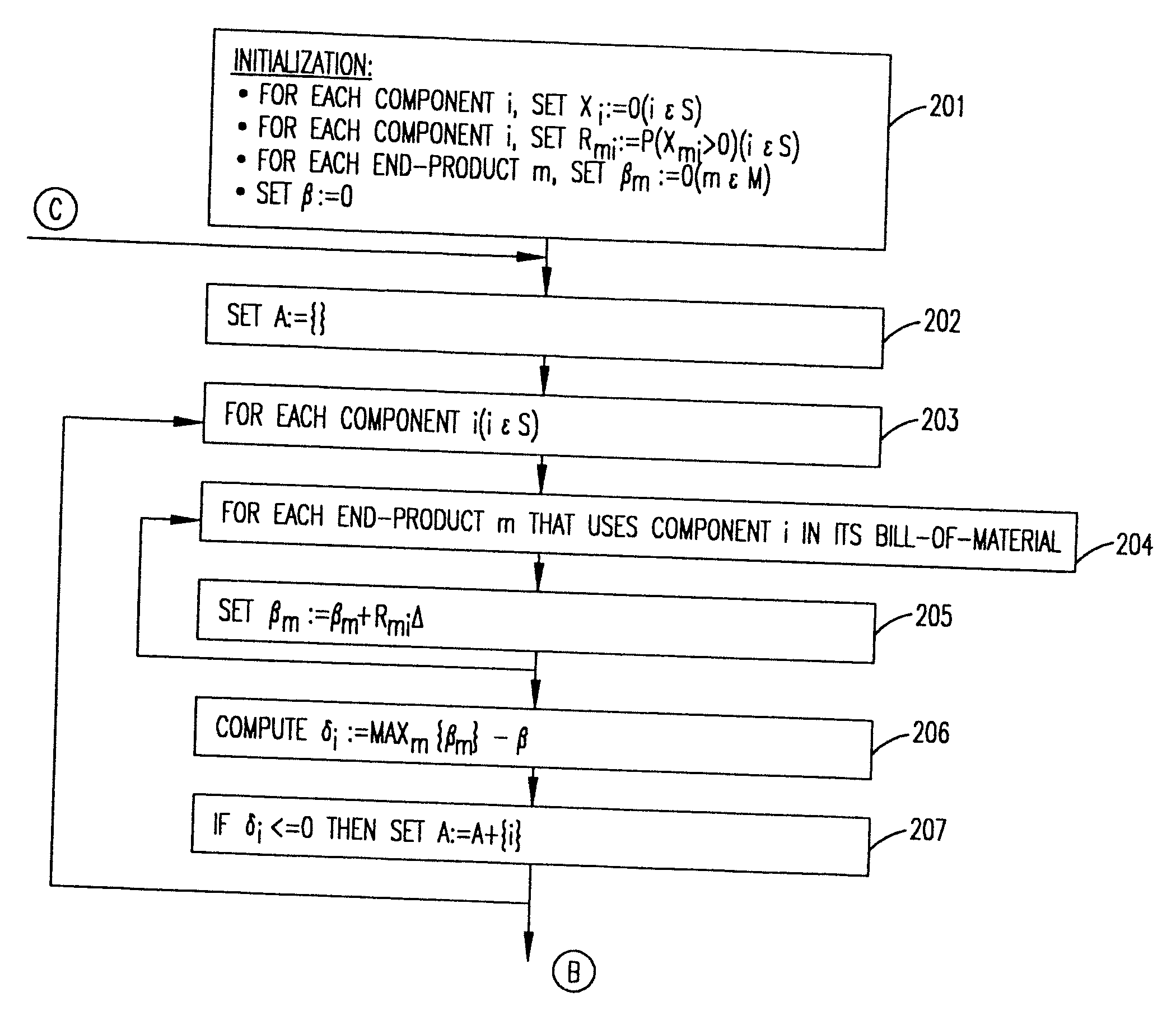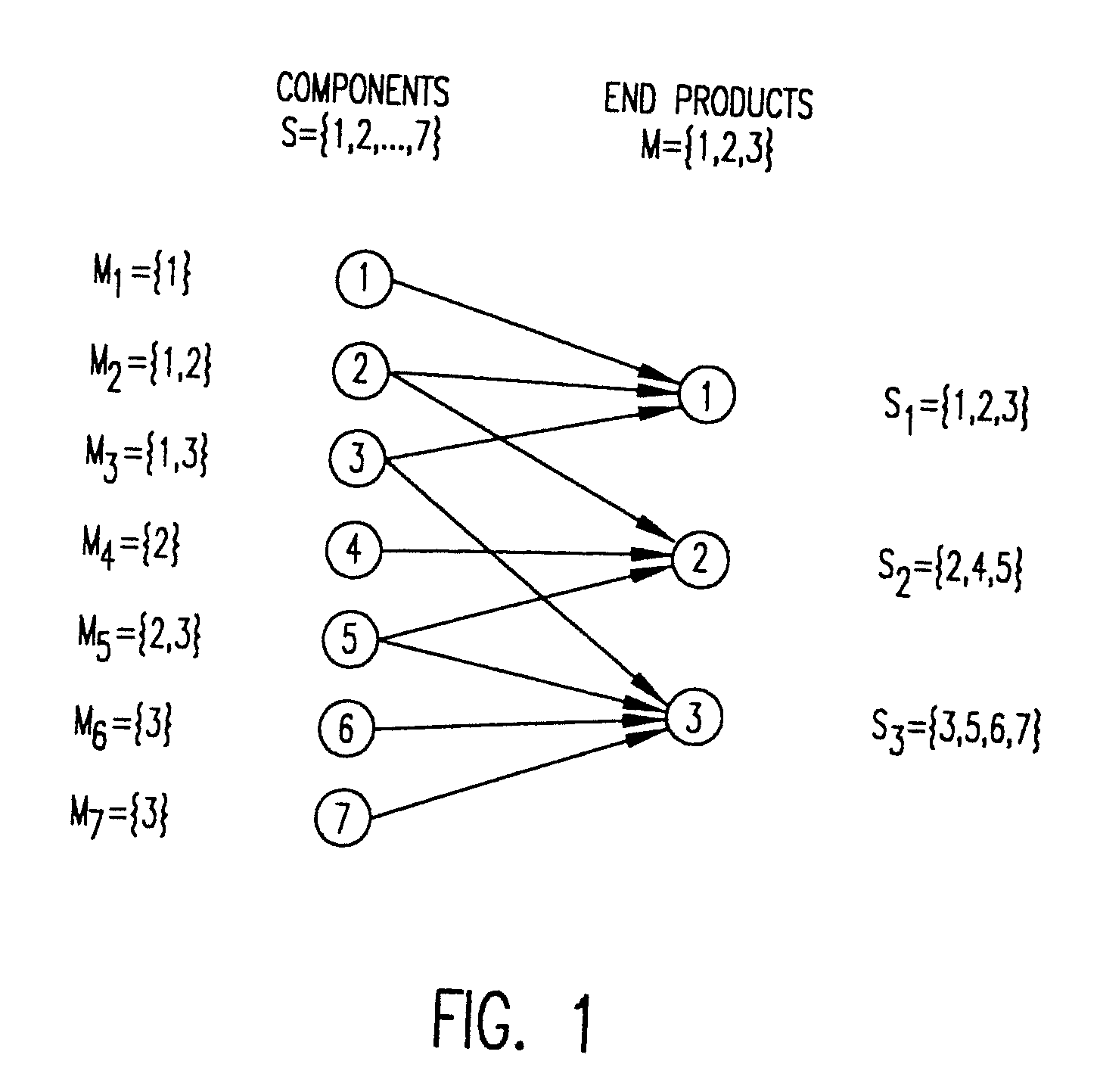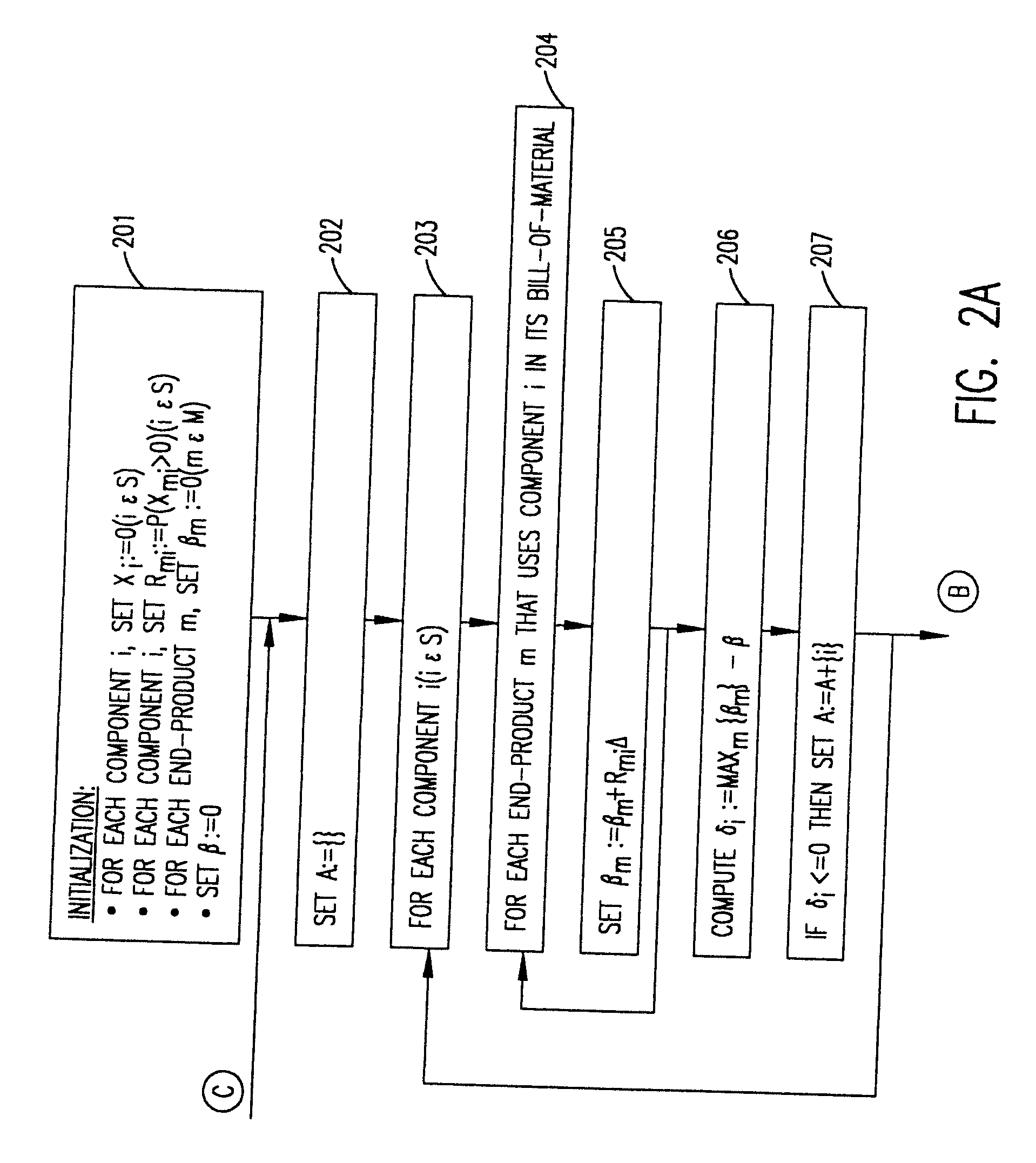Large inventory-service optimization in configure-to-order systems
a technology of configure-to-order system and large inventory, applied in the field of large, can solve the problems of high cost of pc business holding finished goods inventory for any length of time, and achieve the effects of reducing inventory cost, improving service level, and improving forecast accuracy
- Summary
- Abstract
- Description
- Claims
- Application Information
AI Technical Summary
Benefits of technology
Problems solved by technology
Method used
Image
Examples
Embodiment Construction
[0018]We consider a hybrid model, by which each end product is configured to order from a set of components, which, in turn, are built to stock. In other words, no finished goods inventory is kept for any end product, whereas each component (“building block”) has its own inventory, replenished from a supplier following a base-stock policy.
[0019]Referring now to the drawings, and more particularly to FIG. 1, there is shown a diagram illustrating an example of this hybrid model. Abstractly, there are seven components comprising the set S={1, 2, . . . , 7} which are used in various combinations to produce three end products comprising the set M={1,2,3}. The components are maintained in inventory, but no inventory is maintained of end products. Each component inventory is indexed by i, i ε S, where S denotes the set of all components. Associated with each component is a “store”, where the inventory is kept.
ATO Environment
[0020]First, consider the traditional ATO environment. That is, th...
PUM
 Login to View More
Login to View More Abstract
Description
Claims
Application Information
 Login to View More
Login to View More - R&D
- Intellectual Property
- Life Sciences
- Materials
- Tech Scout
- Unparalleled Data Quality
- Higher Quality Content
- 60% Fewer Hallucinations
Browse by: Latest US Patents, China's latest patents, Technical Efficacy Thesaurus, Application Domain, Technology Topic, Popular Technical Reports.
© 2025 PatSnap. All rights reserved.Legal|Privacy policy|Modern Slavery Act Transparency Statement|Sitemap|About US| Contact US: help@patsnap.com



